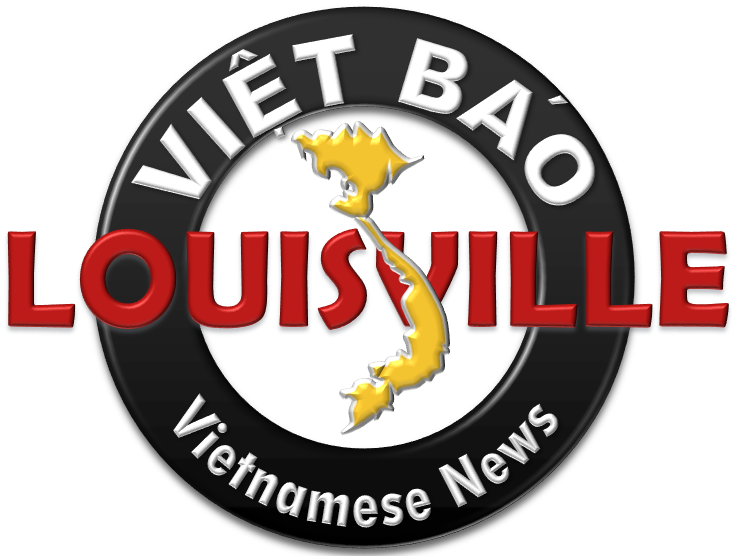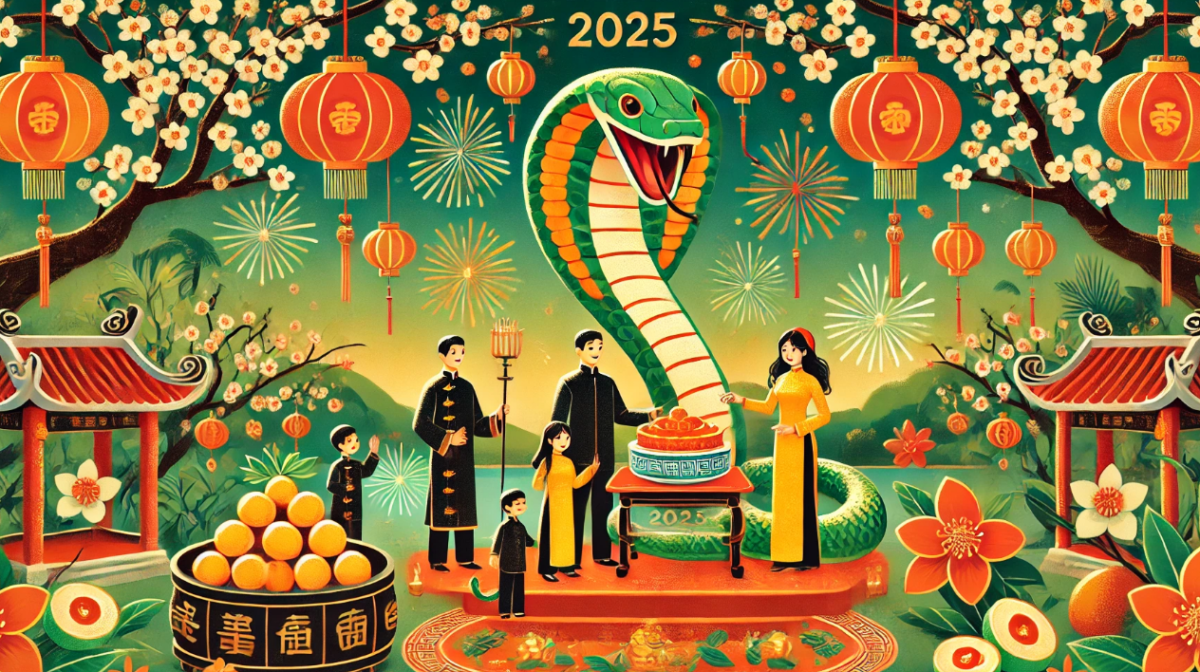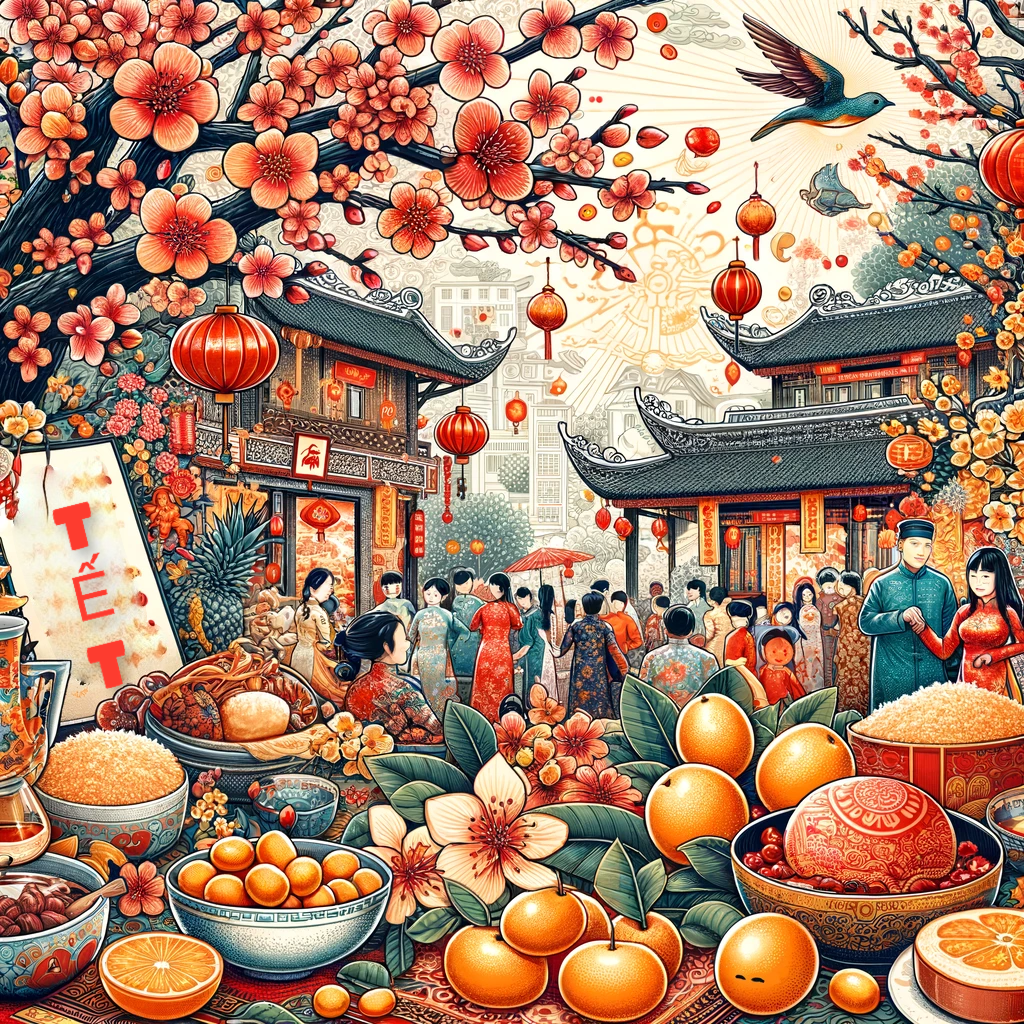Tết Nguyên Đán, commonly known as Tết, is the Vietnamese Lunar New Year and the most important and widely celebrated holiday in Vietnam. In 2025, Tết begins on Wednesday, February 29, marking the transition to the Year of the Wood Snake (Quý Tỵ in Vietnamese). This year holds special significance for the Vietnamese people, blending traditional values with hopes for renewal and growth.
The Year of the Wood Snake (Quý Tỵ)
In Vietnamese culture, the Snake (Tỵ) symbolizes wisdom, mystery, and transformation. Combined with the Wood element (Mộc), 2025 will be a year that emphasizes growth, harmony, and strategic planning. Here’s what it means in the context of Tết:
- Snake Symbolism:
- The Snake is associated with intelligence, elegance, and intuition. It is considered a thoughtful animal, representing strategic thinkers and calm, measured approaches to life.
- Those born under the Snake sign are believed to possess sharp analytical skills, a love for knowledge, and a talent for keeping secrets.
- The Wood Element:
- Wood in the Five Elements (Ngũ Hành) system represents growth, creativity, and vitality. It is also tied to flexibility and kindness, encouraging people to approach challenges with patience and adaptability.
- A Wood Snake year is thought to bring opportunities for personal development and thoughtful action—a time for planting seeds for future success.
Key Themes for Tết 2025
1. Renewal and Growth:
Tết always represents a fresh start, and the Wood Snake year amplifies this energy. Families focus on letting go of the old and embracing the new, symbolized by:
- Cleaning and decorating homes with fresh flowers (e.g., peach blossoms and kumquat trees).
- Clearing debts and resolving conflicts before the new year begins.
2. Wisdom and Introspection:
The Snake’s energy encourages reflection and careful planning. Many Vietnamese people will see 2025 as a time to:
- Evaluate their goals and strategize for long-term success.
- Prioritize education, learning, and self-improvement.
3. Family and Community:
- Tết is a time for reunion, with families coming together to honor ancestors, celebrate unity, and pass down traditions.
- The Snake’s qualities of loyalty and connection remind families to nurture relationships and work together toward shared prosperity.
Traditional Tết Celebrations in 2025
1. Preparations:
- Homes are cleaned and decorated to invite luck and banish bad spirits.
- Families buy Tết-specific plants, such as hoa mai (yellow apricot blossoms) in the south or hoa đào (peach blossoms) in the north.
- Kumquat trees are also popular, symbolizing wealth and happiness.
2. Offerings and Rituals:
- Ancestral altars are cleaned and adorned with fresh offerings, such as fruit, incense, and flowers, to honor loved ones who have passed.
- People often visit family gravesites to clean them and pay respects.
3. Festive Foods:
Tết cuisine reflects abundance and good fortune. Iconic dishes include:
- Bánh chưng (square sticky rice cake) or bánh tét (cylindrical sticky rice cake) filled with pork and mung beans, symbolizing the earth and gratitude.
- Thịt kho trứng (braised pork with eggs) for harmony and family unity.
- Dưa hành (pickled vegetables) to cleanse the palate and signify new beginnings.
4. Customs for Luck:
- Xông đất (First Footing): The first person to enter a home on Tết morning is believed to bring good or bad luck for the year. Families carefully select someone with a positive and compatible zodiac sign to visit first.
- Lì xì (Red Envelopes): Adults give red envelopes filled with money to children and the elderly as a symbol of good fortune and prosperity.
- Avoid arguments, sweeping, or breaking things during the first days of Tết to prevent bad luck.
Unique Vietnamese Beliefs for 2025
In the Year of the Wood Snake, the Vietnamese will emphasize:
- Balance Between Tradition and Growth:
- Honor ancestral traditions while pursuing personal and community progress.
- Education and Knowledge:
- With the Snake’s association with intelligence, 2025 will be seen as an ideal year for academic and professional growth.
- Environmental Consciousness:
- Wood’s connection to nature may inspire a focus on sustainability and care for the environment.
What the Year of the Snake Brings to Different Signs
Each Vietnamese zodiac sign interacts with the Snake differently, bringing specific fortunes for the year. For instance:
- Ox and Rooster: Favorable for career growth and prosperity.
- Pig and Tiger: May face challenges but can overcome them with patience.
- Monkey and Horse: Opportunities for success but require thoughtful planning.
Modern Tết in 2025
Vietnam continues to blend traditional Tết customs with modern celebrations:
- Fireworks displays and public festivals light up major cities like Hanoi, Ho Chi Minh City, and Da Nang.
- The younger generation combines old traditions, like ancestral worship, with global trends, such as travel or digital well-wishing via social media.
Final Thoughts: Embracing the Wood Snake Year
Tết 2025 is a time for renewal, family, and thoughtful growth. The Wood Snake’s energy encourages patience, wisdom, and adaptability, making it an ideal year to:
- Embrace self-improvement and learning.
- Strengthen family bonds.
- Plant the seeds for long-term success.
Whether through traditional rituals or modern expressions of hope and joy, Tết 2025 promises a year of transformation and new opportunities for those who celebrate it. Chúc Mừng Năm Mới! (Happy New Year!) 🌸🐍


